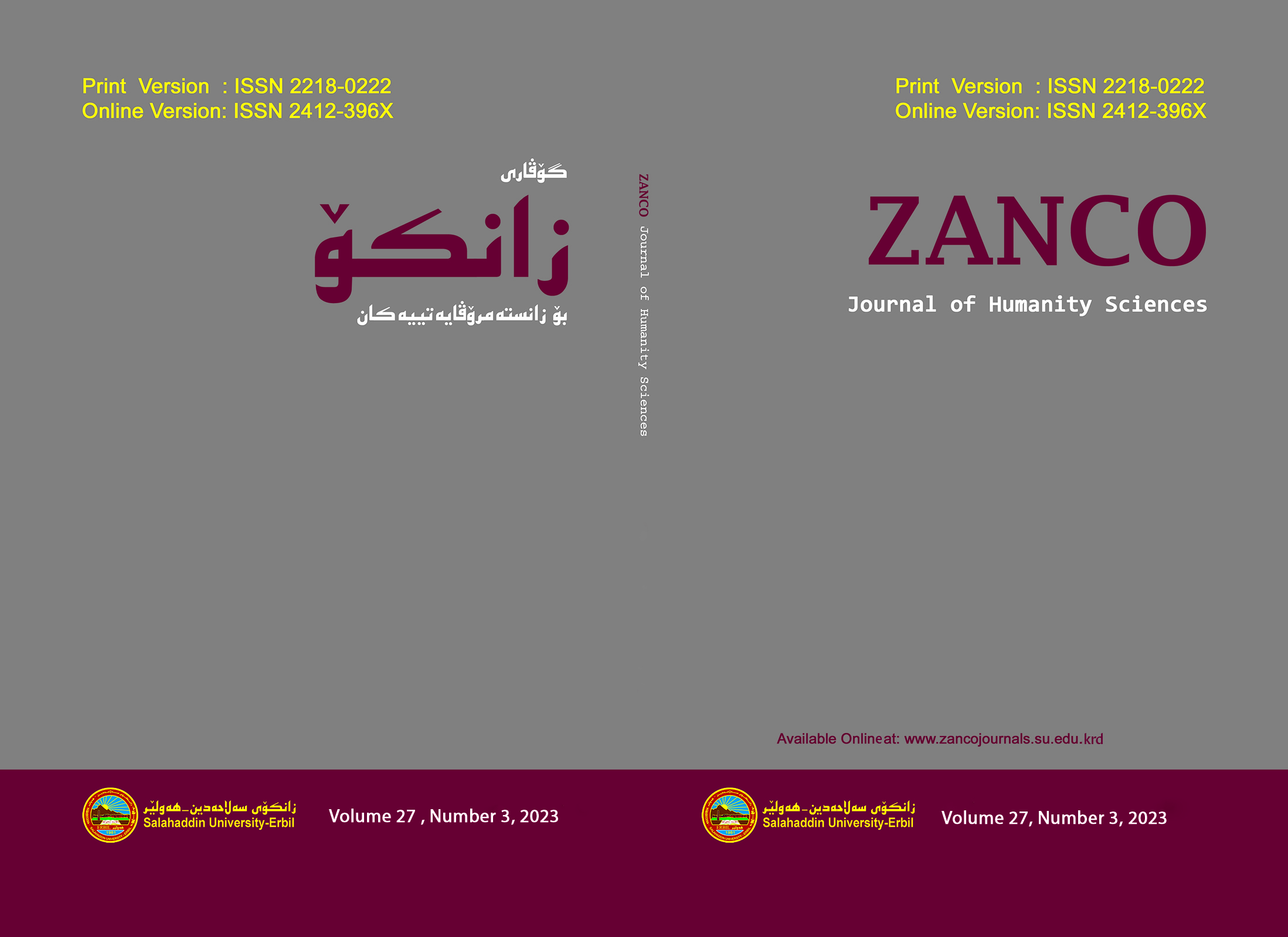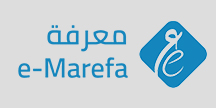Non-Observance of Conversational Maxims in a Kurdish Comedy Drama
Pragmatics
##semicolon##
https://doi.org/10.21271/zjhs.27.3.26##semicolon##
non-observance, conversation, maxims, Kurdish, drama.پوختە
The objective of the study is to find out the non-observance of conversational maxims in a Kurdish comedy drama. It attempts to discover the specific types of non-observance of maxims in a short Kurdish drama. The study uses a mixed method (qualitative & quantitative); the qualitative approach is used for analyzing the characters’ speech, while the quantitative approach is used for counting the utterances in each type of non-observance of the maxims. The results show that flouting quality maxim is the most widely used throughout the drama. Depending on the results in the methodology section, it is clear that flouting the quality maxim is used more than other types of non-observance because this type of non-observance is apparent in comedy works.
سەرچاوەکان
Irawan, B. (2019). A PRAGMATICS ANALYSIS ON THE NON OBSERVANCE OF MAXIMS PERFORMED BY THE CHARACTERS IN SELMA MOVIE. P.46.
Baker A. & Hengeveld K. (2012). Linguistics. UK: Willey Blackwell. P.86.
Basya, A. J. (2017). AN ANALYSIS ON THE NON-OBSERVANCE MAXIMS OF ADAB AND HUMANITIES FACULTY. Ps. 13,17,21.
Andresen, N. (2013). Flouting the maxims in comedy. Faculty of Arts and Social Sciences, 29. http://www.diva-portal.org/smash/get/diva2:704301/fulltext01.pdf
Betti, M. J. (2021). Grice’s Maxims. September. Ps. 2,5. https://doi.org/10.13140/RG.2.2.12486.60487
Blochowiak, J., Grisot, C., Durrleman, S., & Laenzlinger, C. (2017). Formal models in the study of language: Applications in interdisciplinary contexts. Formal Models in the Study of Language: Applications in Interdisciplinary Contexts, October, 1–475. P.5. https://doi.org/10.1007/978-3-319-48832-5
Davies, B. (2000). GRICE’S COOPERATIVE PRINCIPLE: GETTING THE MEANING ACROSS Bethan Davies. 8(1962), P.2.
Ibrahim, D. A. (n.d.). A Study of Advertisements in English and Kurdish with Reference to the Cooperative Principles and Implicature. Ps. 9-13.
Li, Q. (2015). The Application of Cooperative Principle in Oral English Learning. International Journal on Studies in English Language and Literature, 3(1), P.40. www.arcjournals.org
Mbisike, R. C. (2021). A Survey of Infringements of Gricean Maxims in Some Precautionary Inscriptions on Medicine Packets. Journal of Pragmatics Research, 3(2), Ps.163-164. https://doi.org/10.18326/jopr.v3i2.
Moeschler, J. (2012). Conversational and conventional implicatures. Cognitive Pragmatics, December, P.7. https://doi.org/10.1515/9783110214215.405
Muhammad, A. A., & Karim, H. A. (n.d.). An Analysis of Grice ’ s Cooperative Principles in Some Selected English TV Interviews. Grice 48. P.449.
Neimeyer, G. J. (1998). Metaphor and Meaning. Contemporary Psychology: A Journal of Reviews, 43(10), 682–682. https://doi.org/10.1037/001797
Program, A. L. (n.d.). An Introduction to Language and Linguistics. P.160.
Sentf, G. (2014). Understandig Pragmatics. In Angewandte Chemie International Edition, 6(11), 951–952.P.34-35.
Yuvike, Y., & Winiharti, M. (2009). The Non-Observance of the Conversational Maxims: An Analysis of the Dialogues in Arthur Miller’s the Crucible. Lingua Cultura, 3(2), P.119. https://doi.org/10.21512/lc.v3i2.338
NRT Kurdi's Facebook Page, accessed August 12, 2022, https://m.facebook.com/105450704615372/photos/a.105482961278813/259037475923360/?type=3
Newline Group: FOX 22 haji jadr zana roshan avin barnamay fox. You Tube. October 6th 2021. Newline TV Channel. August 9th 2022. 33:08. https://youtu.be/shL1_EcxFnM.
##submission.downloads##
بڵاو کرایەوە
چۆنییەتی بەکارهێنانی سەرچاوە
ژمارە
بەش
##submission.license##
##submission.copyrightStatement##
##submission.license.cc.by-nc-sa4.footer##Except where otherwise noted, content on this site is licenced
under a Creative Commons Attribution License 4.0 (CC BY- 4.0)










